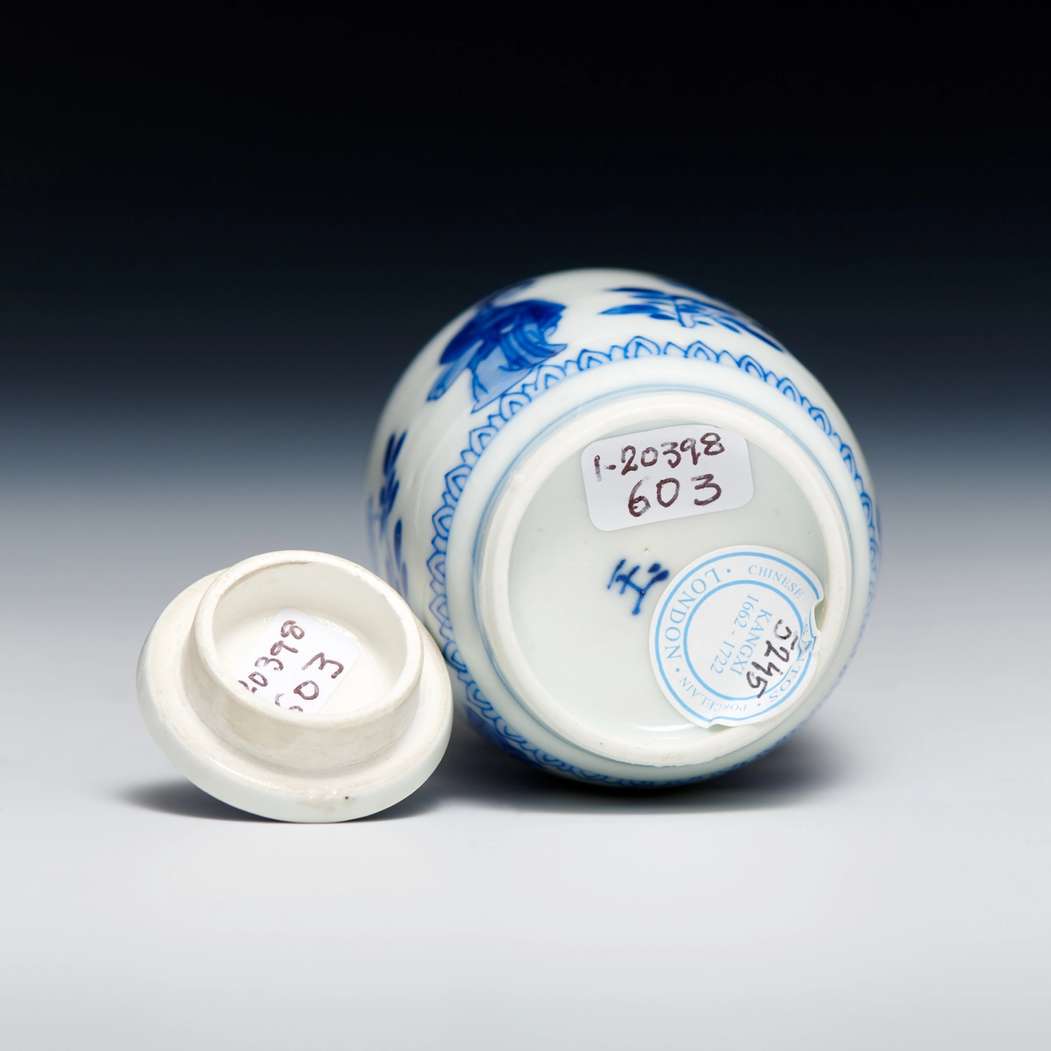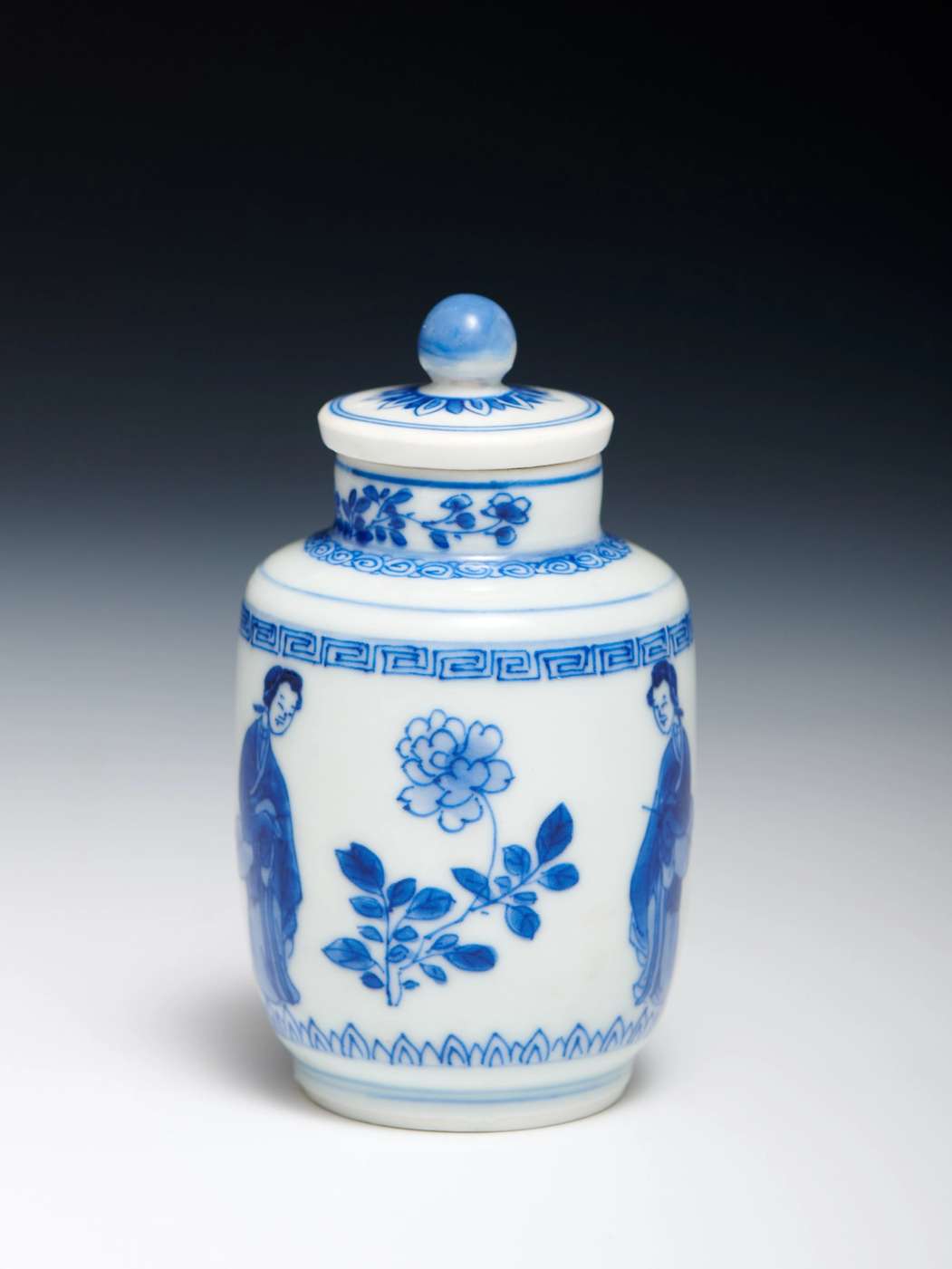Click the above image to zoom
Very rare and fine Chinese soft-paste porcelain cylindrical vase and cover decorated in underglaze cobalt blue
Stock Number: 5245
Very rare and fine Chinese soft-paste porcelain cylindrical vase and cover decorated in underglaze cobalt blue (qinghua) with standing Chinese ladies and vegetation, base with the character jade, Kangxi/Yongzheng reigns, Qing dynasty, h. 9 cm, 3½ in; d. 5 cm, 2 in. 1-20398
Literature: Chinese Soft Paste Porcelain, van Halm & van Halm’s sale and exhibition catalogue, London 2017, p. 30, cat. 30 for an identical vase, without cover, dated Kangxi reign.
◆ Soft paste porcelain was first manufactured in the dying years of Kangxi (1662-1722) and used only for small pieces due to the high manufacturing cost. Soapstone (steatite) was added to the porcelain in order to obtain a sharper painting in underglaze blue. During firing the porcelain and the glaze cooled at different speed and the result was the characteristic fine cracks in the glaze much appreciated by the scholarly collectors.
D’Entrecolles, the Jesuit priest in China at the time, wrote in a letter in 1722 “Porcelain fabricated with hua-shi滑石 (soapstone/slippery-stone) is rare, and much dearer than the other”.
There was a revival in the manufacture of soft-paste porcelain during the Qianlong reign but with a different manufacturing procedure. This time the traditional porcelain body was covered with a layer of hua-shi glaze. This process enabled the manufacture of larger pieces also with great detail in the decoration, but the result was a much less even number of cracks in the glaze.
A soft-paste teapot of small size was excavated in Table Bay, South Africa from the Dutch East Indiaman Oosterland shipwreck (1697) on her homeward voyage (Transactions of the O.C.S. 1992/3).



